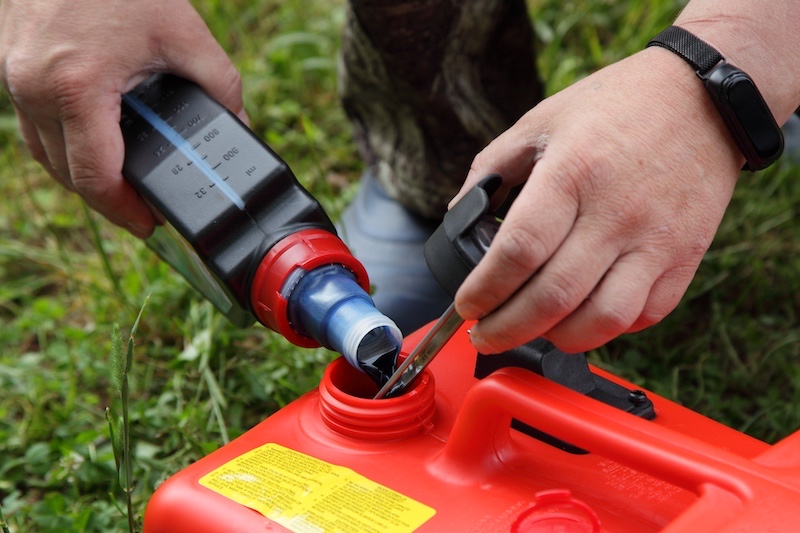The Down and Dirty:
Small Engine Oil
DIFFERENT OIL POWERS LAWN TOOLS AND DIRT BIKES THAN CARS—
SO SMALL ENGINE MACHINES NEED THE RIGHT CARE
What Makes a Small Engine Different?
A 2-stroke or 2-cycle engine is an internal combustion engine that is often found in smaller, lower power engines. Their simple design makes them ideal for everything from weed trimmers to snowmobiles and ATVs.
While still a combustion engine, 2-stroke engines differ from their 4-stroke counterparts in several important ways:
- No valves: 2-stroke engines do not have valves, though they have many of the other components of a 4-stroke engine (piston, cylinder, spark plug).
- Revolution firing: The term “stroke” refers to the movement of the piston in the engine. So, 2-stroke means one stroke in each direction, so a compression stroke followed by an explosion of the compressed fuel. On the return stroke new fuel mixture is injected into the cylinder. Because 2-stroke engines fire every revolution, rather than every-other as 4-stroke engines do, they are able to create increased power within a smaller engine.
- Weight and power: Since they don’t need valves, 2-stroke engines are often smaller and lighter than 4-stroke engines—about 30% lighter. This makes them the right size for smaller machinery and lets them deliver a great power-to-weight ratio. That means 2-stroke engines work best on equipment that needs short bursts of power, like lawn mowers, string trimmers, and chainsaws.
- Oil addition: In 2-stroke engines, you add oil directly to the fuel, while you pour oil into a separate port with a 4-stroke engine. Having oil mixed with fuel also means that 2-stroke engine machines can operate in any orientation since the oil reservoir doesn’t depend on gravity.
How Is 2-Stroke Oil Special?
Because a 2-stroke engine mixes oil together with gasoline, the oil needs to be formulated correctly. The 2-stroke oil needs to have a much lower ash content than a regular lubricating oil would. Because the oil is burned in the engine’s combustion chamber, you want to minimize deposits that would form if ash was in the oil. Also, 2-stroke oil is lighter and contains additives for better performance. The additives for 2-stroke oils generally include detergent/dispersants, anti-wear agents, biodegradability components, and antioxidants.
How Do You Mix 2-Stroke Oil?

Does Using the Right Oil Matter?
Yes! A 4-stroke engine oil should not be used in a 2-stroke application, and 2-stroke oils shouldn’t be used in 4-stroke engines.
Because 2-stroke oils lubricate engine components while mixed in with the fuel, these oils contain components that promote their combustion. Using a 4-stroke oil in a 2-stroke engine can disrupt combustion and cause smoke formation and engine degradation.
Even when using the right oil, 2-stroke oil is consumed at a much higher rate than 4-stroke oils (which are not consumed as part of the lubrication in a 4-stroke engine). Since 2-stroke engines burn oil with the gasoline—typically about 4 ounces of oil per gallon of gasoline—they have reduced fuel economy, and higher cost. This makes running a 2-stroke engine more expensive than running a four-stroke engine. Plus, 2-stroke engines often have a shorter life span.
How Do You Maintain a 2-Stroke Engine?
- Avoid Ethanol Fuel
- Clean the Exterior
- Watch the Oil-to-Gas Ratio
- Store Properly


